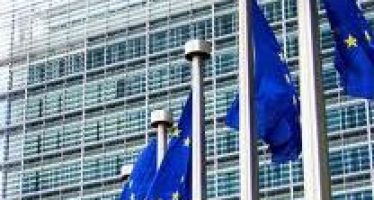World Bank: Tackling Development Crisis Through Financial Innovation
The World Bank uncovers fresh avenues to increase financing capacity.
Global development faces multiple crises: Growing debt burdens, inflation, and the rising cost of finance have made the economic path rockier.
These challenges, together with the escalating climate emergency, have made eradicating extreme poverty and boosting shared prosperity more difficult. Combined, these issues threaten the stability and sustainability of the world.
The World Bank is exploring new ways to channel additional funds into finance development. At its group annual meeting held late last year, shareholders called on multilateral development banks (MDBs) to play a bigger role in scaling-up development financing.

Author: World Bank Managing Director and Chief Financial Officer Anshula Kant
In other initiatives, the International Bank for Reconstruction and Development (IBRD) is considering issuing hybrid instruments to strengthen its capital, leading to increased financing capacity for developing countries, which bear the brunt of the intertwined crises. The IBRD, founded to help rebuild countries after World War II, is an international organisation owned by 189 sovereign members. It offers long-term development loans to creditworthy middle- and lower-income countries. These loans are financed through its equity and from borrowings raised in capital markets.
While hybrid instruments may be new to the MDB community, they are established market tools that occupy a unique space between debt and equity, carrying attributes of both asset classes.
Like debt instruments (bonds), hybrids have principal, coupon, and possibly a maturity. Like equity instruments (stocks), they provide the issuer with loss-absorption capacity through deferred or skipped interest payments.
They are more “junior” than the regular market debt an issuer uses to fund itself — meaning investors are taking on a higher risk. Commercial banks and other financial institutions commonly use hybrid instruments that meet regulatory capital requirements under frameworks such as Basel to strengthen their capital base.
MDBs have not so far done so, but this initiative offers numerous potential benefits for IBRD — and, in turn, to the World Bank’s client countries. It is a way to increase lending capacity without compromising the bank’s triple-A credit rating. From a capital-adequacy and credit-rating perspective, the instruments are treated like additional risk capital, which can be leveraged for greater lending capacity. This leads to more income and more development impact over time. And it happens not only because of additional lending, but also through income transfers to the International Development Association (IDA) — a World Bank Group institution that offers deep concessional financing to low-income member countries.
Interested shareholders can invest in hybrid capital to show their support for the institution, and rapidly increase IBRD’s financing capacity. Since it can leverage hybrid capital, it can be treated as development resources already provided to IBRD by its shareholders — and be multiplied for greater impact.
Hybrid instruments offer an opportunity to tap private-sector investors who don’t normally purchase IBRD’s senior bond issuance. IBRD has a long history in the capital markets; its bonds, first issued in 1947, are rated triple-A by the major agencies and viewed as high-quality securities by investors, including commercial banks, asset managers, insurance companies, pension funds, and central banks.
Given the subordination, these investors wouldn’t be interested in hybrid instruments. That means introducing the World Bank to a new set of investors — allowing IBRD to further diversify its funding, strengthen its financial position, and channel new private capital into development projects.
There’s still a lot of work to be done on this initiative, and lessons to be learned along the way. But this is another example of how the World Bank is tackling the challenges of global development with financial innovation. The World Bank and its many stakeholders — most importantly, those who are less well-off — are bound to benefit.
You may have an interest in also reading…
Matein Khalid: A Random Walk Down Silicon Valley’s Pre-IPO Deal Flow
2020 was a spectacular year for investing in late stage technology unicorns and I am proud to have led significant
EU: Single Rule Book in Banking
The European Commission has adopted a package of Regulatory Technical Standards (RTS) needed to implement important provisions of the Capital
IFC: Climate Change – Threat and Opportunity for Private Sector
As world leaders met at the 21st Session of the Conference of the Parties to United Nations Framework Convention on



















































































